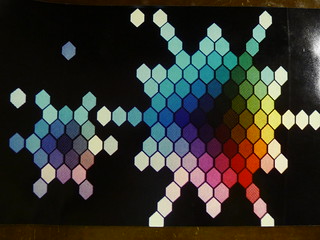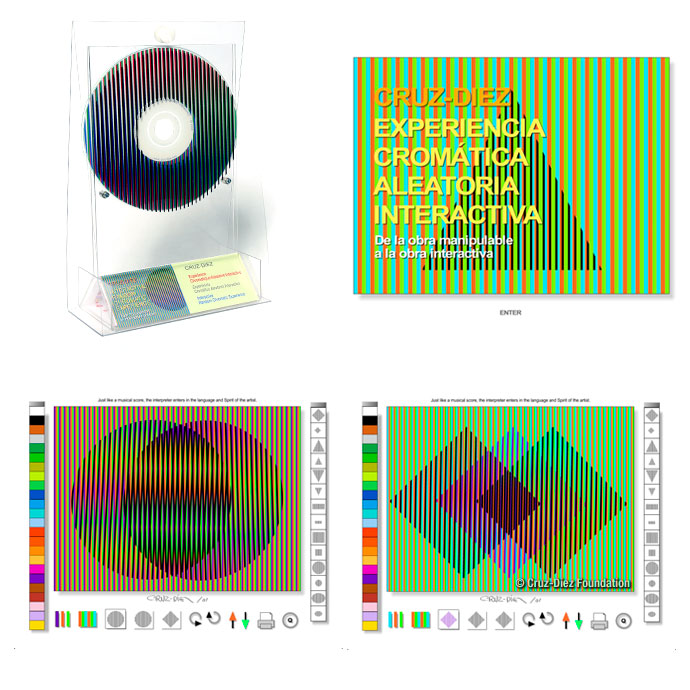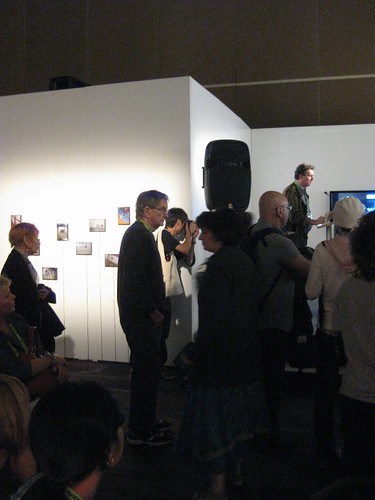
As I progress in my quest of finding computer art data from Aldo Giorgini’s state, I have discovered very intriguing traces of early pixel-based simulations. It is exciting to see so much material that I (and probably nobody else) has seen before. Giorgini was in a constant duality between art and technology. Many would think that this duality is a plus, but to him it only meant a struggle. After the early computer art scene from the 1970s faded away in the 1980’s, Giorgini had several dilemmas to deal with. The personal computer, as opposed to the mainframe computers, were more accessible to people, and were vastly commercialized. I found some 80’s clippings offering IBM or Commodore computers. Around 1980, Giorgini aquired a Tektronix 4027, a raster based computer. This jump from the “vector” foundations of CalComp to the pixel-based technologies in Tektronix presented a challenge to Giorgini, since it is a drastically different technology, that was also incipient at that time. During all of the 1980’s, Giorgini’s work in computer art became less intense and he became more focused in his work with the HEC-2 and HEC-1 software from the Hydrologuc Engineering Center. The majority of his classes were in this subject and developed several manuals for his classes at Purdue and this institution. In 1983, he won a grant with the Apple Education foundation for the creation of the “Apple Hydraulics”, an apple version of HEC. Giorgini was obsessed with fluid simulation, even his non-computer paintings resemble the fluid turbulences that he plotted. He continued to use CalComp throughout the 1980’s, but did some simulation work in the full-color tektronix.


In the above images we can see similar simulations using different technologies. The one of the left is CalComp and the one on the right is a photo from the tektronix screen. It seems like Giorgini tried to produce some raster-based art, but struggled to produce image outputs. The CalComp plots outnumber the color pictures and he might have just feel creatively limited. His work using CalComp allowed him to reproduce the image at very a big scale, and to produce screenprints.
However, I have some indices that he tried to create a framework for artistic production in Tektronix, in a similar way that he did with his softwares “Fields” and “Light”. At Giorgini’s state I have found several manuscripts and folders with the title “Palette”. In his CV, he mentions an existing published report about this software, but as for now I have only found several manuscripts with numeric formulations and text.


I am hoping to find more about this program. As a result of this software he won an art prize in Germany in 1984.
The late life of Giorgini, was full of trips around the world. He became a knowledgeable resource for HEC-2 and was invited to conferences in Morrocco, Tokio and Italy. He had a very busy schedule that included teaching, publishing, reviewing and traveling. He collaborated with his graduate students, whom he had friendly and long lasting relationships. Giorgini was very much liked based on the correspondance and student evaluations found. In contrast to this, his faculty colleagues at the Civil Engineering department did not support his promotion to full-professor based in the fact that he was more known as an artist. In a letter found, voting committee members argued that he didn’t have enough publications for the amount of years that he had been at Purdue. Is it possible that Civil Engineering department “repressed” an innovative artist? In a similar way, last month his murals have been removed from the potter engineering center, with the argument that they seem dated. Today, the new buzz word is “Innovation”, but the institutions that say that foster it don’t really understand how innovation happens and they jump into fast conclusions. Innovation is a very slow process that takes years of not-knowing. The academic world is all but innovative, with the faculty and tenure system, when professors are only valued for the amount of publications, rather than the significance of their discoveries. Yes, this makes me sad, angry. Why is it that nobody at Purdue is interested on taking care of Giorgini’s murals? Is it for the same reasons that he didn’t get his promotion in 1990? Are we just using Innovation in technology as a buzz concept but not really embracing it?



